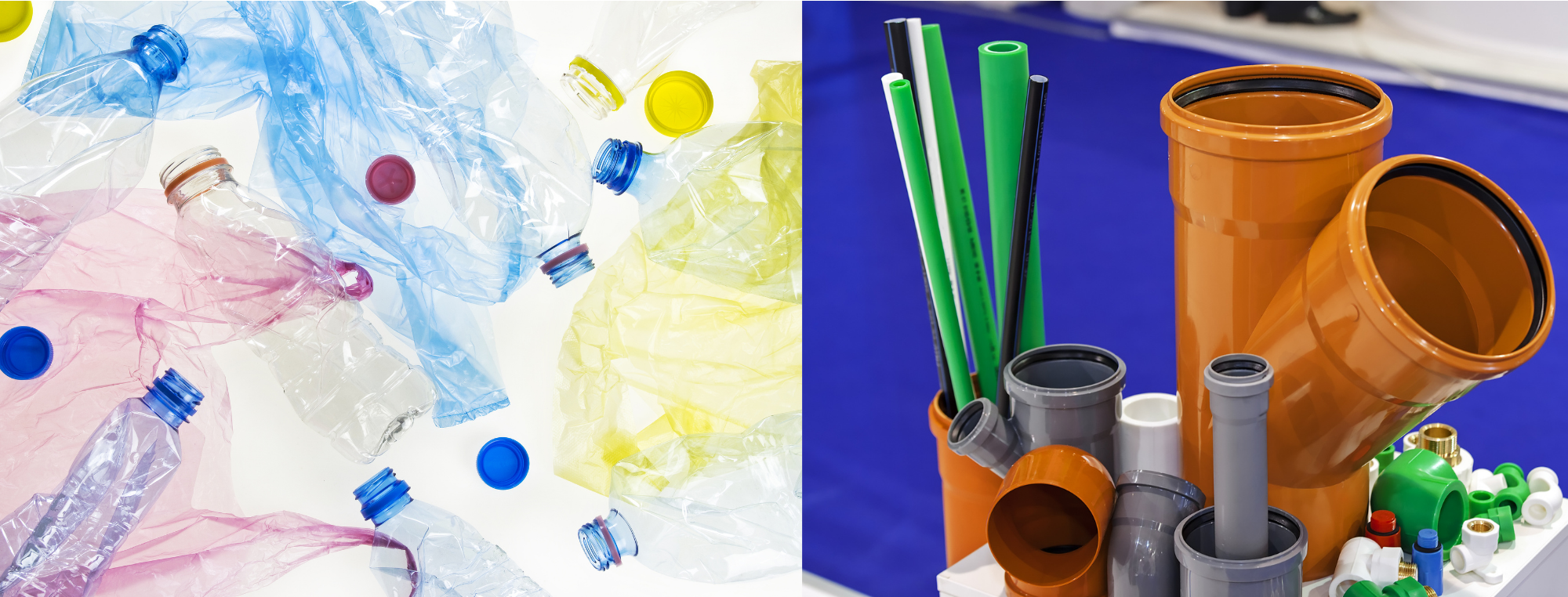
Do All Plastics Melt Again? — A Closer Look at Thermoplastic and Thermosetting Polymers and Their Recycling
Understanding their intrinsic differences—and how materials like PET exemplify thermoplastic recyclability—is essential for improving overall plastic recycling efficiency. Let's explore the definitions, representative materials, plasticity characteristics, and recycling technologies of thermoplastic and thermosetting polymers, with a focus on the critical role of melting in thermoplastic recycling.
1. Definitions and Structural Characteristics of Thermoplastic and Thermosetting Polymers
Thermoplastics consist of linear or branched polymer chains held together by physical intermolecular forces such as van der Waals forces and hydrogen bonding. When heated above their glass transition or melting temperature, the polymer chains gain sufficient mobility, allowing the material to soften and flow. Upon cooling, the chains lose mobility and the material solidifies. This melting and solidification process is fully reversible and can be repeated multiple times without altering the polymer's molecular backbone, providing excellent processability and recyclability.
Thermosetting polymers undergo an irreversible curing process initiated by heat or chemical hardeners, resulting in extensive chemical crosslinking and formation of a rigid three-dimensional network. This crosslinked structure imparts outstanding thermal stability, mechanical strength, and chemical resistance. Due to the permanent covalent bonds formed during curing, thermosets cannot be melted or reshaped once set, making them non-recyclable through conventional melting methods.
2. Representative Materials and Typical Applications
Thermoplastics are extensively used in packaging, electronics, automotive, and consumer goods due to their excellent processability and recyclability. Key materials include:
- Polyethylene terephthalate (PET): Known for its high transparency and excellent gas barrier properties, PET is widely used in beverage bottles and food packaging and plays a pivotal role in global plastic recycling systems.
- Polypropylene (PP) and Polyethylene (PE): Used for plastic bags, automotive interiors, and household appliances, these materials offer good mechanical properties and chemical stability.
- Polycarbonate (PC): Valued for its high transparency and impact resistance, PC is common in electronics casings and safety equipment.
Thermosets are preferred for high-performance applications demanding superior mechanical strength and dimensional stability:
- Epoxy Resins: Widely used in composites, electronic encapsulation, and coatings, providing excellent mechanical properties and electrical insulation.
- Phenolic Resins: Known for high-temperature resistance and flame retardancy, used in thermal insulation and molded components.
- Unsaturated Polyester Resins (UPR): Commonly applied in composites for marine, construction, and automotive industries.
- Thermoset processing involves molding, casting, or lamination techniques and results in a permanently hardened product.
3. The Intrinsic Strong Link Between Plasticity and Recycling Performance
Thermoplastics, with their non-crosslinked linear or branched polymer chains, can be melted and remolded repeatedly. PET, a quintessential thermoplastic, undergoes collection, cleaning, melting, pelletizing, and remanufacturing during recycling.
Control of melting conditions—temperature, shear, and time—is critical to minimizing chain scission and thermal degradation, thereby preserving intrinsic viscosity (IV), mechanical strength, and optical clarity. The IV is a key indicator of polymer chain integrity and recycled resin quality. Advanced melting technologies such as vacuum devolatilization, dynamic degassing, and online melt viscosity monitoring enhance the purity and consistency of recycled resins, supporting the establishment of closed-loop recycling systems.
Thermosetting polymers'crosslinked networks confer high-performance properties but present substantial recycling challenges. Once cured, these materials cannot be melted or remolded. Mechanical recycling is limited to grinding or crushing into powders for energy recovery or filler use. Chemical recycling methods such as pyrolysis or solvent extraction are necessary to break down thermosets into reusable small molecules. However, these processes are energy-intensive, costly, and less mature, limiting widespread application.
4. Melting: The Core Step in Thermoplastic Recycling
Melting is the critical step in the recycling of thermoplastics, directly affecting the quality and usability of recycled materials. Key technological considerations include:
- Precise temperature and time control: To avoid polymer degradation and chain breakage.
- Shear rate optimization: Balanced to ensure uniform melting without accelerating degradation.
- Vacuum and dynamic degassing: To remove moisture, volatile impurities, and residual solvents, improving recycled resin purity.
- Online monitoring: Melt flow index and color consistency checks ensure stable quality to meet downstream manufacturing requirements.
Modern recycling lines employ twin-screw extruders, multifunctional devolatilization units, and intelligent control systems to create efficient and stable melt recycling loops, forming a robust foundation for sustainable plastics manufacturing.
5. Conclusion and Outlook
The recyclability of plastics is fundamentally dictated by their molecular architecture and plasticity. Thermoplastics, due to their reversible melting characteristics, dominate mechanical recycling and circular utilization efforts. Thermosets, despite their superior performance, are hindered by irreversible crosslinking and require advanced chemical recycling solutions to improve recovery rates.
Continued innovation in thermoplastic recycling technologies and development of green recycling routes for thermosetting polymers will be critical to advancing the circular economy in plastics, addressing environmental challenges, and fostering sustainable industry growth.

